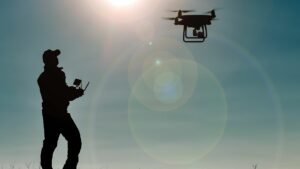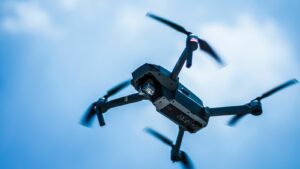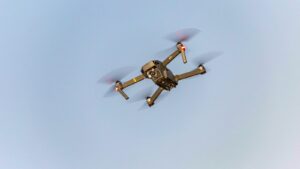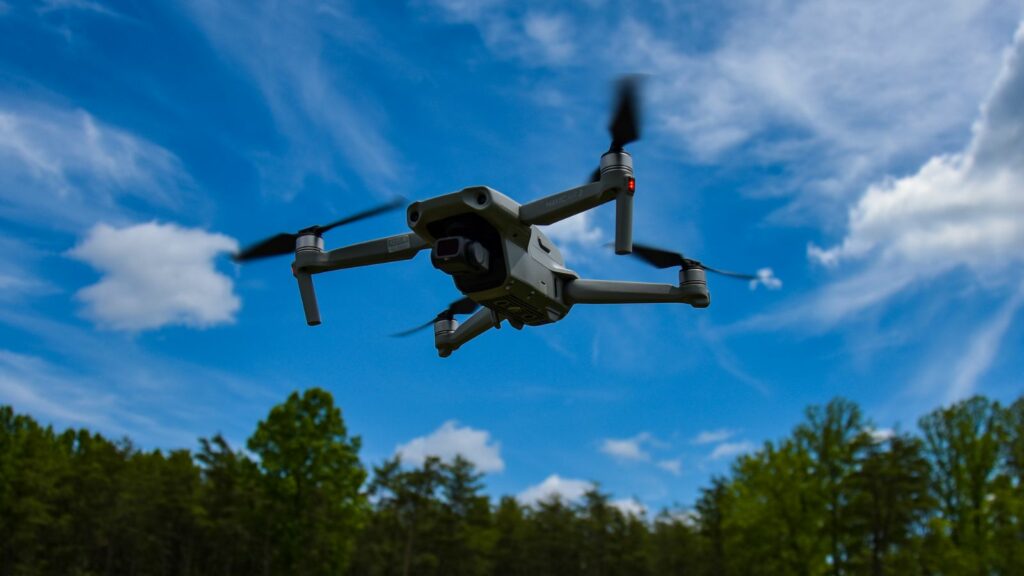In the ever-evolving world of technology, drones are making a significant impact. They’re not just toys for tech enthusiasts anymore. From agriculture and real estate to emergency response and delivery services, drones are reshaping traditional industries. But what’s next for these flying machines?
Drones New Innovations
Pioneering drone new innovations have revolutionized numerous sectors. From consumer entertainment to professional use, drones have become indispensable.
The Rise of Drones in Various Industries
Drone new innovation has unfolded in a myriad of industries – from agriculture to real-estate, emergency services to mail delivery. In agriculture, drones facilitate precision farming. They can analyze a large area allowing for the efficient use of resources, such as water or fertilizer. Because of this efficiency, crop yield often improves and costs decrease. In real estate, drones capture high-resolution images or videos of properties, providing potential buyers with a comprehensive view. Sectors like emergency services and delivery services benefit as well. Drones can reach otherwise inaccessible areas, aiding in search and rescue missions or delivering essential packages in remote locations.
Consumer and Professional Uses of Drones
 On the consumer front, drones have emerged as a popular tool for photography and videography. They can capture unique, high-quality images and videos from the air, providing a novel perspective for the viewer. For hobbyists, drones offer an exciting experience of flight and can reach up to speeds of 120 miles per hour.
On the consumer front, drones have emerged as a popular tool for photography and videography. They can capture unique, high-quality images and videos from the air, providing a novel perspective for the viewer. For hobbyists, drones offer an exciting experience of flight and can reach up to speeds of 120 miles per hour.
In the professional space, drones enhance work processes by increasing efficiency and reducing risk. For instance, they are used in surveying and mapping, where they can collect data more quickly and accurately than human surveyors. In construction, drones play a significant role in safety inspections, allowing for remote viewing of structures, reducing the need for hazardous manual inspections. Their potential for good increases as the capacity of drones expand and newer models carry advanced technology like thermal imaging or LIDAR.
Drone innovations continue to reshape industries, increasing efficiency, while offering new perspectives, whether for pleasure or professional use.
Groundbreaking Enhancements in Drone Functionality
Aspects of drone functionality continue growing each year. This section explores the impacts of AI on drones and the role of advanced sensing and imaging technologies.
The Impact of AI on Drone Capabilities
 Artificial Intelligence (AI) profoundly influences drone functionality. AI-infused drones achieve tasks previously dependent on human control. With AI, drones adapt to different environments, ensuring precise and efficient functionalities. For instance, AI-powered drones effectively analyze geographical terrains for mapping purposes or for search and rescue missions.
Artificial Intelligence (AI) profoundly influences drone functionality. AI-infused drones achieve tasks previously dependent on human control. With AI, drones adapt to different environments, ensuring precise and efficient functionalities. For instance, AI-powered drones effectively analyze geographical terrains for mapping purposes or for search and rescue missions.
Moreover, AI fuels the development of autonomous drones. Autonomous drones, leveraging AI, execute missions independently, navigating complex flight paths with ease. Notably, autonomous drones can monitor environmental changes, spot anomalies, or even detect forest fires.
Furthermore, AI-driven behavior analytics constitutes another noteworthy application. By analyzing movement patterns, drones provide critical intelligence, notably in crowd monitoring or wildlife tracking.
Advanced Sensing and Imaging Technologies in Drones
Advancements in sensing and imaging technologies significantly boost drone capabilities. Infusing drones with these technologies allows for clearer, more detailed imagery. Such innovations make drones indispensable tools in numerous sectors.
 For example, thermal imaging technology in drones provides a new perspective for firefighters. It helps to detect heat, identifying hotspots in a fire. Similarly, Light Detection and Ranging (LIDAR) technology, combined with drones, improves the accuracy of geographical mapping.
For example, thermal imaging technology in drones provides a new perspective for firefighters. It helps to detect heat, identifying hotspots in a fire. Similarly, Light Detection and Ranging (LIDAR) technology, combined with drones, improves the accuracy of geographical mapping.
Additionally, multispectral imaging technology in drones enables the identification of plant diseases in agriculture. Detecting such issues early leads to timely, effective interventions.
The evolution continues, with drone new innovations pushing the boundaries of what drones can accomplish. Thanks to AI and advanced sensing technologies, drones are not just changing our skies—they’re transforming how we interact with the world.
Expanding Capabilities
The transformative power of drones is undeniable. They’ve evolved from simple playthings to indispensable tools across a range of industries. It’s clear that innovation is the driving force behind drone evolution, pushing boundaries and expanding capabilities. From precision farming and property marketing to emergency services and delivery, drones are redefining traditional operations.



